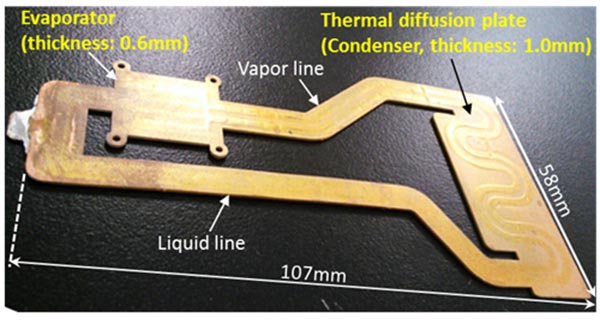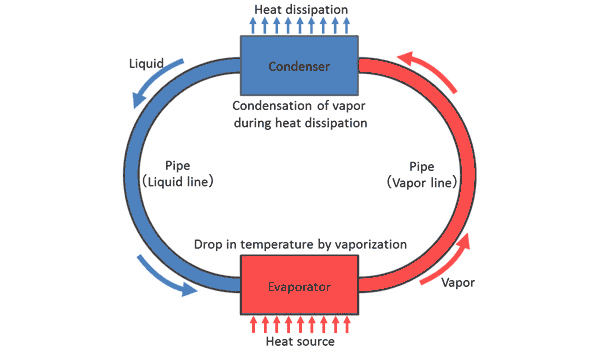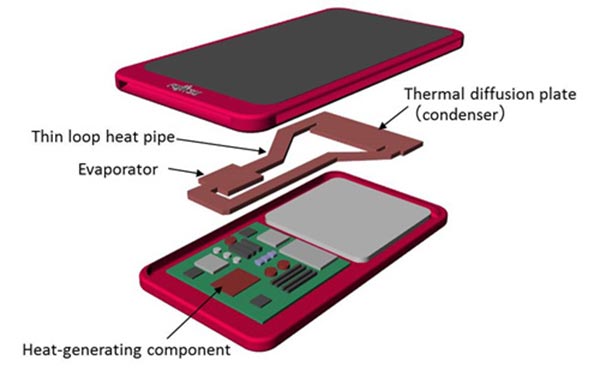Fujitsu has developed a new cooling solution aimed at compact electronic devices. The new heatpipe cooler design, measuring just 1mm at its thickest is said to be "capable of transferring approximately five times more heat than current thin heat pipes".

Waste heat generation and cooling is becoming a greater concern in the mobile device market as processors are speeding up to satisfy consumer demand for portable computing power. In January there was some controversy over apparent Samsung mudslinging against Qualcomm, suggesting the Snapdragon 810 ran too hot for Galaxy S6 inclusion.
Looking to the future ARM sees people using their smartphones as the core of a 'Seamless Computing' platform, as demonstrated in this video. For the faster more powerful smartphones, desired in such systems in the future, better cooling could be vital.
So how does Fujitsu construct its new thin loop heat pipe offering 5X efficiency? Describing the background to this cooler design Fujitsu says:
"A loop heat pipe is a heat-transfer device that consists of an evaporator that absorbs heat from the heat source and a condenser that dissipates that heat away, with the two components connected by pipes into a loop (Figure 1). A working fluid is encapsulated inside this closed loop as a coolant. The heat from the heat source evaporates the coolant, and the energy that goes into evaporating the coolant is taken away from the heat source, lowering its temperature. It is based off of the same principle used when sprinkling water on pavement to reduce heat."

Figure 1
Fujitsu's heat pipe construction consists of stacked 0.1mm thick copper sheets perforated with an offset pattern of miniscule pores to encourage capillary action. This arrangement suits mobile devices well as it transfers heat efficiently regardless of the device orientation. The design of the cooler uses the heat source to power the thermal transfer so doesn't require any pump or power from the device battery. Pipe layout is flexible and can be customised depending upon space available in your mobile device design.

While working prototypes are shown in Fujitsu's blog post it doesn't expect to make devices until 'fiscal 2017'. It is looking to use the tech beyond mobile devices but doesn't specifically mention PCs and laptop PCs.













